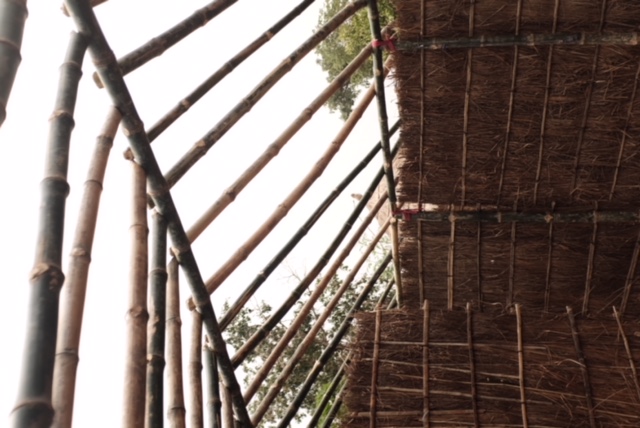Home
As we walked through a village in the Terai we passed a group of 5 Muslim men cutting bamboo. We stopped and watched for a moment before asking if they would be willing to tell us about what they were doing. They responded enthusiastically by fetching us chairs and offering us seats in the shade of their bamboo trees with the sweetest smiles on their faces. As we took our seats next to the elderly, children, and goats they cleared a huge circle for all to come and sit in on the conversation.
A middle-aged man in a traditional Terai garb sat atop a tall mound of gravel and began to explain what all of the cut bamboo was for. He motioned behind us to a half-built mud hut. They were building a home for a male relative who appeared to be around the age of 60. All the men in the family were participating in the building of this home for their beloved Buba (father).
We asked about the process of building their homes. It takes about 10 days for 5 men to build the average sized home (about 10’x12′). First thick poles of bamboo (which they grow themselves) are set up at each corner (vertical and horizontally) to build a framework. After the framework is set and tied together the people take straw in bundles and pile it all laterally on top of each other to create walls. The smaller poles of bamboo (which we walked up to them as they were cutting) were set horizontally and vertically like a checker pattern on both sides of the straw walls and tied to the original framework to hold all the straw in place. Now that the basis for the walls is finished mud is made with simple water and dirt and is packed on top of the straw to make the entire house durable. The mud then sets in the hot summer sun. Finally, a thatch roof made of bundled straw is set in place.
What most would consider a sign of poverty, these people were proud to show us. And I was more than honoured the be shown. 

